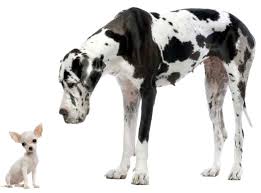Miremos los siguientes ejemplos:
The Nile is the longest river in the world.
I think this book is better than the other one.
The first exercise was easy but this is more difficult.
This classroom is bigger than the one next door.
This is the worst television programme I’ve ever watched.
Jane is their eldest daughter.
Ahora repasemos las reglas:
-Cuando los adjetivos tienen un sílaba, el comparativo se forma agregando -er y para el superlativo usamos -est:
long – longer – the longest
big – bigger – the biggest (se duplica la consonante cuando tenemos monosílabos terminados en una consonante)
dry – drier – the driest (se cambia la “y” por la “i” y se agrega -er o -est)
-Cuando los adjetivos tienen dos sílabas o más, el comparativo se forma agregando more y para el superlativo usamos the most:
modern – more modern – the most modern
beautiful – more beautiful – the most beautiful
-En el caso de palabras de dos sílabas terminadas en “ly” aplicamos la misma regla que para los monosílabos:
healthy – healthier – the healthiest
friendly – friendlier – the friendliest
-Comparativos y superlativos irregulares:
good – better – the best
bad – worse – the worst
far – farther/further – the farthest/the furthest
little – less – the least
much/many – more – the most
Para personas usamos:
old – elder – the eldest

